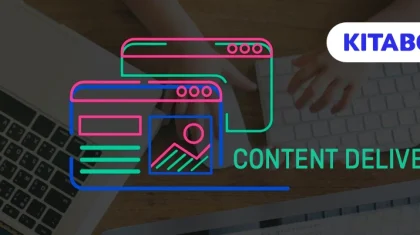
The Ultimate Guide to eBook Creator Software (2024)
In the digital era, the art of storytelling and information sharing has evolved dramatically, with eBooks emerging as a pivotal medium. This transformation has been largely driven by the advent of eBook creator software, tools that democratize the publishing process, making it accessible to everyone from individual authors to large corporations.
This comprehensive guide aims to explore the nuances of eBook creation software, offering insights into its functionalities, benefits, and how to choose the right tool for your specific needs.
Understanding eBook Creator Software
What is eBook Creator Software?
eBook creator software is a class of digital tools designed to facilitate the creation, formatting, and publishing of electronic books. These tools vary in complexity, offering a range of functionalities from basic text formatting to advanced features like multimedia integration and interactive content creation.
They cater to a spectrum of users, from individuals crafting simple text-based eBooks to businesses and educational institutions developing rich, interactive digital publications.
Why Use eBook Creator Software?
- Efficiency and Accessibility: These tools streamline the process of transforming a simple manuscript into a professionally formatted eBook. They make publishing more accessible, removing traditional barriers.
- Creative Freedom and Customization: eBook software offers extensive design and formatting options, giving creators the freedom to bring their vision to life without the need for specialized design skills.
- Cost-Effective Solution: Compared to traditional publishing, eBook creator software is a more economical solution, reducing production costs and simplifying the process of revisions and updates.
Key Features to Look For in an eBook Creator Software
User-Friendly Interface
The ideal eBook creator software should feature an intuitive, user-friendly interface, catering to both tech-savvy users and those with limited technical expertise. This ease of use is crucial in allowing creators to focus more on content rather than grappling with complex software mechanics.
Rich Formatting and Design Options
A hallmark of good eBook software is its range of templates, font styles, and design elements. This variety is essential for crafting visually appealing eBooks that capture and retain reader interest.
Multimedia and Interactivity
The ability to embed videos, audio clips, and interactive elements is a game-changer, particularly for educational and engaging eBooks. This feature transforms eBooks from static text to dynamic, immersive experiences.
Compatibility and Export Flexibility
Your chosen software should support various eBook formats like EPUB, PDF, and MOBI, ensuring your content is accessible across different devices and platforms. This flexibility is key to reaching a broader audience.
Collaboration Features and Cloud Integration
For team projects, look for software that supports collaboration and cloud-based operation. These features enable real-time teamwork and remote access, enhancing productivity and efficiency.
Top eBook Creator Software of 2024
Visme
- Best for: Engaging and interactive eBooks.
- Key Features: Drag-and-drop editor, diverse template library, multimedia capabilities.
- User Experience: Known for its user-friendly interface, Visme is a favorite among non-designers for creating visually appealing and interactive eBooks. It’s particularly popular in marketing and education sectors.
Adobe InDesign
- Best for: Professional-grade publishing.
- Key Features: Advanced layout controls, comprehensive typography tools, Adobe Creative Cloud integration.
- User Experience: Adobe InDesign is the industry standard for professional publishing, offering unmatched design capabilities. It’s best suited for users with some design background or those willing to invest time in learning its intricacies.
KITABOO
- Best for: Educational and large-scale digital publishing.
- Key Features: Multi-language support, interactive elements, cloud hosting, analytics.
- User Experience: Kitaboo offers a balance of user-friendliness and advanced features, making it ideal for creating interactive educational content and large-scale digital publications.
Please book a free live demo to know more.
Canva
- Best for: Beginners and quick designs.
- Key Features: Intuitive design interface, extensive template collection, social media integration.
- User Experience: Canva is renowned for its simplicity and effectiveness, making it a go-to tool for individuals and small businesses for quick eBook designs.
Scrivener
- Best for: Long-form writing and complex projects.
- Key Features: Organizational tools, corkboard view, diverse export options.
- User Experience: Scrivener is tailored for writers managing large documents like novels, offering tools to organize ideas and narratives efficiently.
Calibre
- Best for: Comprehensive eBook management and conversion.
- Key Features: Extensive format support, eBook library management, conversion capabilities.
- User Experience: Calibre is a one-stop solution for eBook management. It’s particularly favored by users who need a tool for organizing and converting eBooks into different formats.
Designrr
- Best for: Content repurposing and marketing eBooks.
- Key Features: Import content from various sources, template variety, easy export options.
- User Experience: Designrr is ideal for marketers and bloggers looking to repurpose existing content into eBooks. Its ability to import blog posts, PDFs, and other content directly into eBook templates makes it a unique and valuable tool.
Ulysses
- Best for: Writers and bloggers focused on productivity.
- Key Features: Distraction-free writing environment, markdown support, seamless sync across devices.
- User Experience: Ulysses is praised for its clean, distraction-free interface, making it a favorite among writers and bloggers who value a focused writing environment.
Sigil
- Best for: Advanced users needing EPUB editing.
- Key Features: WYSIWYG editor, code view, metadata editing.
- User Experience: Sigil is a powerful EPUB editor for users who are not afraid to dive into the more technical aspects of eBook creation. It’s particularly useful for creating complex, interactive eBooks.
Flipbuilder
- Best for: Interactive and engaging flipbooks.
- Key Features: Page-flipping effect, rich media integration, online distribution.
- User Experience: Flipbuilder is unique for its ability to create interactive flipbooks, making it a popular choice for digital brochures, magazines, and catalogs.
Making the Right Choice: Factors to Consider
Purpose and Audience
Consider the primary goal of your eBook and the audience you intend to reach. Different types of eBooks, such as educational content, fiction, or corporate reports, require different functionalities from the eBook software.
Budget Constraints
Your budget will significantly influence your choice of software. While free tools can be a good starting point, they may lack advanced features offered by premium versions.
Technical Skills and Learning Curve
Assess your technical proficiency and willingness to learn new software. Some tools are more user-friendly but may offer limited customization, while others might offer extensive features at the cost of a steeper learning curve.
Integration with Other Tools
Consider how well the eBook software integrates with other tools you use, such as content management systems, design software, or marketing platforms. Seamless integration can significantly streamline your workflow.
Customer Support and Community
Good customer support and an active user community can be invaluable, especially when encountering technical issues or seeking creative inspiration.
Future-Proofing Your Choice
Think about the long-term viability of the software. Choose a tool that is regularly updated and keeps pace with technological advancements and industry standards.
Tips for Creating Compelling eBooks
Start with a Strong Foundation: Using Templates
Templates can provide a solid starting point, especially for those new to eBook design. They offer a structured layout that you can customize to fit your content.
Consistency is Key: Maintaining a Unified Design
A consistent design throughout your eBook is crucial for professionalism. This includes uniform use of fonts, color schemes, and layout styles.
Engage Your Readers: Leveraging Multimedia
Incorporate multimedia elements like images, videos, and interactive content to enhance engagement. Balance these elements with your text to maintain readability and interest.
Test Across Platforms: Ensuring Device Compatibility
Make sure your eBook is responsive and visually appealing across different devices, including tablets, eReaders, and smartphones, to provide a seamless reading experience.
Feedback Loop: Refining Your eBook
Gather feedback from potential readers or focus groups to gain insights into how your eBook is received. Use this feedback to make necessary adjustments and improvements.
Narrative Flow and Structure
Pay attention to the narrative flow and structure of your eBook. Organize content logically and ensure that it progresses in a coherent and engaging manner.
Interactive Elements
If your eBook software allows, add interactive elements like quizzes, surveys, or clickable links. These features can enhance user engagement and provide a more dynamic reading experience.
Optimization for Different Platforms
Optimize your eBook for different platforms. This includes ensuring that it is readable on various eReaders, tablets, and smartphones, and that interactive elements function correctly across these devices.
Effective Use of Visuals
Use visuals effectively to complement and enhance your text. This includes choosing appropriate images, infographics, and charts that align with your content and add value to your eBook.
Proofreading and Editing
Thoroughly proofread and edit your eBook to ensure it is free of errors. Consider using tools like Grammarly or hiring a professional editor to polish your content.
Conclusion: Embracing the Future of Publishing
The right eBook creator software can significantly impact your digital publishing journey. By understanding your specific needs and exploring the various options available, you can select a tool that not only meets your current requirements but also supports your future publishing endeavors. Embrace the power of digital publishing and transform your creative ideas into captivating eBooks that resonate with your audience.
The landscape of digital publishing is ever-evolving, and the right eBook creator software is your key to navigating this dynamic terrain. By leveraging these tools, you can unlock new possibilities in content creation and distribution, reaching audiences far and wide. As you embark on your eBook creation journey, remember that the software you choose is a partner in your creative process, one that should align with your vision and goals.
Advanced Tips for eBook Creation
Leveraging Analytics for Improvement
Use analytics tools, if available, to gather insights on how readers are interacting with your eBook. This data can inform future content and design decisions.
Building a Marketing Strategy for Your eBook
Develop a marketing strategy for your eBook. This includes leveraging social media, email marketing, and other channels to promote your eBook and reach a wider audience.
Exploring Monetization Options
If your goal is to monetize your eBook, explore various options such as selling it on platforms like Amazon, offering it as a lead magnet, or using it as part of a larger content marketing strategy.
Staying Updated with Industry Trends
Stay abreast of the latest trends in digital publishing and eBook software. This includes following industry blogs, participating in forums, and attending webinars or conferences.
Seeking Feedback and Continuously Improving
Continuously seek feedback from your readers and use it to improve your future eBooks. This iterative process is key to growing as an eBook creator and publisher.
The Future of eBook Creation
Emerging Technologies in eBook Creation
Keep an eye on emerging technologies such as AI and VR, and how they might impact eBook creation and consumption in the future.
The Role of eBooks in Education and Training
Consider the growing role of eBooks in education and training. Interactive and multimedia-rich eBooks are becoming vital tools in these sectors.
Sustainability and eBooks
Reflect on the sustainability aspect of eBooks. Digital publishing reduces the need for paper, making it an environmentally friendly alternative to traditional publishing.
Expanding Your Reach with eBooks
Think of eBooks as a tool to expand your reach. With the right strategy, eBooks can help you reach global audiences, transcending geographical and cultural barriers.
Final Thoughts: Your Journey with eBook Creator Software
Embarking on your journey with eBook creator software is an exciting venture into the world of digital publishing. Whether you are a novice writer, an experienced publisher, or a business looking to expand your digital footprint, the right eBook creation tool can open up a world of possibilities. Embrace the journey, experiment with different tools and features, and watch as your ideas transform into captivating digital narratives that resonate with readers around the world.
To know more, please write to us at contact@kitaboo.com
Suggested Reads:
Discover how a mobile-first training platform can help your organization.
Kitaboo is a cloud-based platform to create, deliver & track mobile-first interactive training content.







